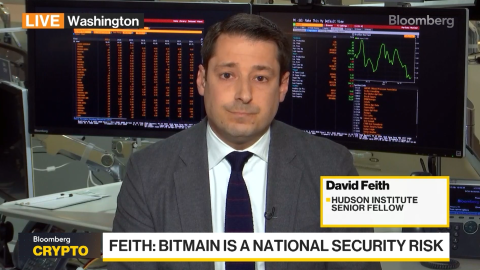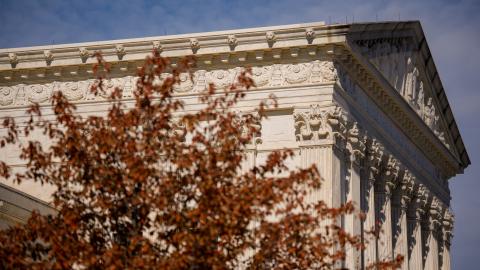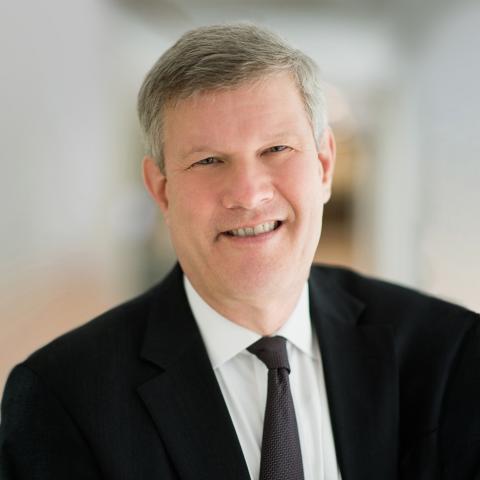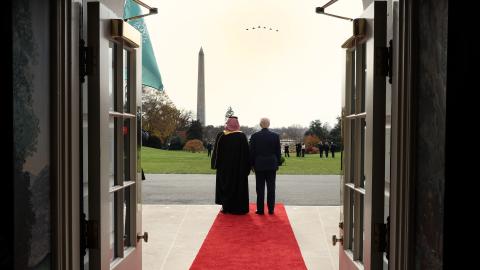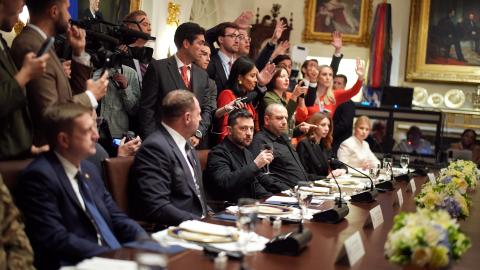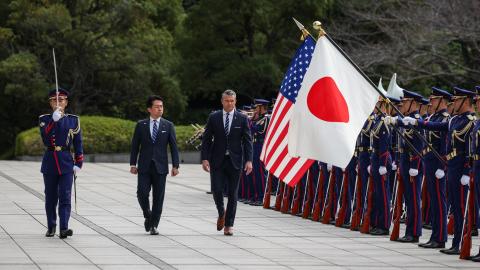
In-person attendance is by invitation only. The event will also air live on this page.
Inquiries: [email protected]
Press inquiries: [email protected]
Chairman of the Council of Economic Advisers Stephen Miran on the Trump Administration’s Economic Agenda

In-person attendance is by invitation only. The event will also air live on this page.
Inquiries: [email protected]
Press inquiries: [email protected]

Chairman, Council of Economic Advisers

Senior Fellow
Thomas J. Duesterberg is a senior fellow at Hudson Institute and an expert on trade, manufacturing, economics, and foreign policy.
Stephen Miran, chairman of President Donald Trump’s Council of Economic Advisers, will provide remarks at Hudson Institute and join Senior Fellow Thomas Duesterberg for a conversation on the administration’s economic agenda and the outlook for America’s trade partners. Chairman Miran will also discuss the intersection of trade and national security and global public goods provided by the United States.
In-person attendance is by invitation only.
Episode Transcript
This transcription is automatically generated and edited lightly for accuracy. Please excuse any errors.
Joel Scanlon:
Good afternoon and welcome to Hudson Institute. I’m Joel Scanlon, executive vice president here at Hudson. We’re grateful to those of you who have joined us in person on this lovely spring afternoon, and my thanks to those watching online as well. We’re particularly grateful to Dr. Stephen Miran for being here today for his remarks and conversation with my colleague Tom Duesterberg. Under any circumstances, it is not easy to get away from the daily demands of the White House. But in what I think it is fair to call unsettled economic times, both for the US and global economies. There are a few better position to explain President Trump’s economic agenda, what the president has referred to as an economic revolution, the mix of policies that will form the basis of his approach, and the links between US economic and national security.
Dr. Miran served with distinction at the Department of Treasury and President Trump’s first administration. While still in the private sector as a senior strategist at Hudson Bay Capital last fall, he authored the influential and widely read a user’s guide to restructuring the Global Trading System. Now he serves as the 32nd chairman of the President’s Council of Economic Advisers. Mr. Chairman, thank you so much for being here at Hudson. The podium is yours.
Stephen Miran:
Thank you all for being here. Today I’d like to discuss the United States provision of what economists call global public goods for the entire world. First, the United States provides a security umbrella which has created the greatest era of peace mankind has ever known. Second, the US provides the dollar and Treasury securities reserve assets which make possible the global trading and financial system, which has supported the greater era of prosperity mankind has ever known. Both of these are costly to us to provide. On the defense side, our men and women in uniform take heroic risks to make our nation in the world safer, preserving our liberties generation after generation. And we tax hardworking Americans mightily to finance global security. On the financial side, the reserve function of the dollar has caused persistent currency distortions and contributed along with other countries unfair barriers to trade to unsustainable trade deficits.
These trade deficits have decimated our manufacturing sector and many working class families in their communities to facilitate non-Americans trading with each other. Let me clarify that by reserve currency, I mean all the international functions of the dollar, private savings and trade included. I’ve often used the example that when private agents in two separate foreign countries trade with each other, it’s typically denominated in dollars because of American status as the reserve provider. That trade entails savings housed in dollar securities, often Treasuries. As a result of all this, Americans have been paying for peace and prosperity, not just for themselves, but for non-Americans too. President Trump has made it clear that he will no longer stand for other nations free riding on our blood, sweat and tears, whether in national security or trade. The Trump administration has already in its first hundred days moved forcefully to reorient our defense and trading relationships to place Americans on fairer ground.
The President has promised to rebuild our broken industrial base and pursue trade terms that put American workers and businesses first. I’m an economist and not a military strategist, so I’ll dwell more on trade than on defense, but the two are deeply connected. To see how it works imagine two foreign nations, say China and Brazil trading with each other. Neither country has a currency that is trusted, liquid and convertible, which makes trading with each other challenging. However, because they can transact in US dollars backed by US Treasuries, they’re able to trade freely with each other and prosper. Such trade can only occur because of the US military might ensuring our financial stability and the credibility of our borrowing. Our military and financial dominance cannot be taken for granted, and the Trump administration is determined to preserve them. But our financial dominance comes at a cost. While it is true that demand for dollars has kept our borrowing rates low, it has also kept currency markets distorted.
This process has placed undue burdens on our firms and workers, making their products and labor uncompetitive on the global stage, and forcing a decline in our manufacturing workforce by over a third since its peak, and a reduction in our share of world manufacturing 40 percent. We need to be able to make things in this country, as we saw during COVID, when many of our supply chains could not survive without being reliant on our biggest adversary, China. We clearly should not rely on our biggest adversary for equipment essential to keeping our populations safe and secure. Nor should our biggest adversary be allowed to benefit so much from an international security and financial architecture we finance. There are other unfortunate side effects of providing reserve assets. Others may buy our assets to manipulate their own currency to keep their exports cheap. In doing so, they end up pumping so much money into the US economy that it fuels economic vulnerabilities and crises.
For example, in the years running up to the 2008 crash, China along with many foreign financial institutions, increased their holdings of US mortgage debt, which helped fuel the housing bubble, forcing hundreds of billions of dollars of credit into the housing sector without regard as to whether the investments made any sense. China played a meaningful role creating the global financial crisis. It took almost a decade to recover until President Trump got us back on track in his first term. In my view, to continue providing these twin global public goods, there needs to be improved burden sharing at the global level. If other nations want to benefit from the US geopolitical and financial umbrella, they need to pull their weight and pay their fair share. The costs cannot be solely borne by everyday Americans who’ve already given so much. The best outcome is one in which America continues to create global peace and prosperity and remain the reserve provider, and other countries not only participate in reaping these benefits, but they also participate in bearing the costs.
By improving burden sharing, we can enhance resilience, preserve the global security and trading systems, remain the reserve provider for many decades into the future. Moreover, it is critical not just for fairness but for capacity. We are under siege by hostile adversaries trying to erode our manufacturing and defense industrial base and disrupt our financial system. We will be able to provide neither defense nor reserve assets if our manufacturing capacity is hollowed out. The president has made clear that the United States is committed to remaining the reserve provider, but that the system must be made fairer. We need to rebuild our industries to project the strength needed to preserve reserve status, and we need to be able to pay our bills to do so. What forms can that burden sharing take? There are many options. Here are a few ideas.
First, other countries can accept tariffs on their exports to the United States without retaliation. Providing revenue to the US Treasury to finance global public goods provision. Critically retaliation will exacerbate rather than improve the distribution of burdens. That might make it even more difficult for us to finance global public goods. Second, they could stop unfair and harmful trading practices by opening their markets and buying more from America. Third, they could boost defense spending and procurement from the United States, buying more US-made goods, and taking the strain off our service members and creating jobs here. Fourth, they can invest in and install factories in America. They won’t face tariffs if they make their products in this country. Fifth, they could simply write checks to Treasury, that would help us finance global public goods as well. Tariffs deserve some extra attention. Most economists and some investors dismiss tariffs as counterproductive at best and devastatingly harmful at worst. They’re very wrong.
One reason the economic consensus on tariffs is so wrong is because nearly all of the models that economists use to study international trade assume either no trade deficits at all, or they assume that deficits are short-lived and quickly self-correct through currency adjustments. According to standard models, trade deficits will cause the dollar to weaken, which reduces imports and boosts exports, eventually wiping out the trade deficit. If that happens, tariffs may be unnecessary, because trade will balance itself over time. And in this view intervening with tariffs can only make things worse. However, that view is at odds with reality.
The United States has run current account deficits for five decades, and these have widened precipitously in recent years, going from about 2 percent of GDP in the first Trump administration, to a high of nearly 4 percent of GDP in the Biden administration. And this has happened all while the dollar has appreciated not depreciated, as those models might tell you. The long run is here and the models are wrong. One reason they’re wrong is that they fail to account for the US provision of global reserve assets. Reserve status matters, and because demand for the dollar has been insatiable, it has been too strong for international flows to balance even over five decades.
More recent economic analyses allow for the possibility of persistent trade deficits that resist automatically rebalancing, and that’s more in line with reality that the US has experienced. They show that by imposing tariffs against exporting countries, the US can improve economic outcomes, raise revenues, and impose huge losses for the tariff nation even with full retaliation. In this sense, analysis of what economists call the incidence of tariffs indicates that a large share and burden of the tariffs are paid for by the country on which we are applying the tariffs. Countries that run large trade surpluses are pretty inflexible. They can’t find other sources of demand to substitute for America’s. Instead, they have no choice but to export. And America is the largest consumer market in the world. By contrast, America has plenty of substitution options. We can make stuff at home or we can buy from countries that treat us well, treat us fairly, instead of from countries that take advantage of us.
This difference in leverage means that other countries end up bearing the cost of tariffs. We can reallocate our demand across borders more easily than other countries can move their factories across borders. In 2018 2019, China bore the cost of President Trump’s historic tariffs through a weaker currency, meaning their citizens became poorer with less purchasing power on the global stage. The tariff revenue paid for by China was used to finance President Trump’s tax cuts for American workers and firms. This time around, tariffs will help pay for both tax cuts and deficit reduction. Lower taxes on Americans financed in part by revenue provided from foreigners will create economic growth, dynamism, and opportunity, the likes of which our country has never seen, ushering in President Trump’s new golden age. Deficit reduction will help lower Treasury rates and with the mortgage rates and consumer credit card rates stimulating an economic boom.
It is important to note here, the tariffs are not levied simply to collect revenues. For example, the president’s reciprocal tariffs are designed to address tariff and non-tariff barriers and other forms of cheating like currency manipulation, dumping, and subsidies to gain unfair advantage. Revenue is a nice side effect, and if it is used in part for lowering taxes, it can help turbocharge competitiveness improvements and boost US exports. Burden sharing can allow the United States to continue leading the free world for many decades. It’s a must not only for fairness but for feasibility. If we don’t rebuild our manufacturing sector, we’ll be strained in providing the security we need for our safety, the safety of the world, and to underpin our financial markets and global financial markets. The world can still have the American defense umbrella and trading system and reserve assets, but it should start paying its fair share for them. Thank you, and I’m happy to take some questions.
Thomas Duesterberg:
Thank you, Dr. Miran, for your comprehensive explanation of the superstructure, if you will, of the policy that your administration has undertaken. I wanted to start by clarifying one of the great mysteries of recent times, which is the formula that was used to announce the quantities of the reciprocal tariffs last week. It wasn’t based solely on tariff rates. Could you explain where that formula came from and how it fits into the overall thinking about how to solve the problems that you articulated?
Stephen Miran:
Thanks, Tom. Yeah, that formula has driven some conversation recently. CEA was involved in calculating a variety of means, of estimating approaches to thinking about non-tariff barriers, and a variety of approaches were considered. At the end of the day, the president chose to go with a formula relating to closing trade deficits, suggested by someone else in the administration, and that was the approach that was decided it would be taken. I do think it’s important to emphasize that the president declared an emergency with respect to trade deficits. The executive order was with respect to trade deficits. And so of course trade deficits would be heavily involved in calculating tariff rates because that was the basis for the emergency. And so it makes perfect sense that you would be using an approach like that if you’re trying to adjust trade deficits.
Thomas Duesterberg:
Okay. Well, let’s go to the next step. A lot of countries have come forth with ideas addressing the problems that have been articulated and the tariffs have been put into place. You, in your opening remarks and the president when he announced the new policy, talked about a number of different problems we have. Currency manipulation, one. Subsidies is another. Intellectual property theft is another. To help both the business community and our trading partners to understand what it is that they should be doing or our trading partners should be doing, is there a general way to think about weighing different factors such as reducing subsidies, reducing tariffs, reducing currency manipulation? How are those various factors going to be put together for your administration to make the decision that that’s enough, that we’re making a good contribution to the overall rebalancing?
Stephen Miran:
Yeah, thanks. That’s a great question. I guess let me say that I didn’t win a landslide in the Electoral College and the president did, and so the president will at the end of the day decide what package, if any, he wants to accept as a deal.
The president is famous for his negotiating ability and famous for his ability to create deals when nobody thinks it’s possible. So I would encourage folks in other countries to approach with offers. I think that all of the things that you said would be welcomed by the United States. The administration and the president have been very clear that we want increased access to foreign markets that would boost our exports. There are plenty of markets where American products just either aren’t allowed by fiat or there’s sort of flimsy regulations designed to protect local incumbents. And those regulations can be related to sort of bizarre health requirements that are very different than we have here, or environmental requirements or whatever that sort of keep our products out. And sometimes it could be tariff rates, also. It could be subsidies. It could be intellectual property protections. There’s all sorts of barriers to American exports around the world. And I can only imagine that the president would really welcome barriers to American exports being taken down that would sort of make American manufacturing as competitive as it should be instead of being artificially kept out of foreign markets.
Thomas Duesterberg:
I ran a trade association for 12 years that was devoted to promoting the manufacturing sector in the United States. And your remarks and the president’s remarks all emphasize a lot the need to return or grow American manufacturing. But I wonder if there’s not a broader way to think about this, because what we’re looking at in the future are high technology products, but also things like software, social, digital trade of one sort or another, social media. These things are all important to our economy and one of the growth accelerators in our economy is the digital economy. And there are barriers to American providers, especially from Europe and China for our digital providers. Is that a major part of what you will be thinking about that needs to be rectified through the negotiation process?
Stephen Miran:
So I think that those things are important. And I think that manufacturing strength is important, I think that digital strength is important, and I think that services strength is important. I think that all of those things are important. I think it’s undeniable that we’ve gotten a little bit tilted out of balance against manufacturing in the scheme of those things that matter. And it tilted out of balance to the extent that it becomes a national security threat because you need to be able to produce stuff if you’re going to defend yourself. You can’t defend yourself with advertising algorithms. And so those are important. Services are important. I don’t want to say that services are not important or that we should not produce services. I do think it’s also important to have a diversified economy and a sufficiently diversified industrial base that should you need to defend yourself, you are able to.
Thomas Duesterberg:
Okay. In your important paper, A User’s Guide to Restructuring Global Trading System, you discuss ways to address dollar overvaluation. And the president has remarked on this, and Secretary Bessent has remarked on this. The president and his advisors have consistently argued that part of the means to achieve the global trade rebalancing is to reverse decades of an overvalued dollar. How are you thinking about achieving this? And the simplified question often gets asked of officials like you is, “Are we really in favor of a strong dollar?”
Stephen Miran:
Thank you. So first of all, let me clarify a couple of things about that piece. First of all, it’s not important. I wrote it prior to my consideration for this role. It doesn’t reflect administration policy. Lots of people have speculated that we’re secretly following sort of some policy path laid out in that document. Nothing could be further from the truth. The president has been very transparent for months now about what he intended to do and he continues to fulfill the promises that he made on the campaign trail, and I have no doubt we’ll continue to do so.
Second, that piece really had two elements to it. One was my diagnosis of the problem, which I just elaborated on. My diagnosis of the problem behind manufacturing and trade deficits is sort of an elaboration of what I exposited in that piece. But then beyond the diagnosis of the problem, that piece really aims to provide a recipe book. Here are the different tools in the toolbox and what you can do with them. Some recipes are easy to make. Some are difficult to make. Some are a nourishing, nutritious meal and some will leave you hungry again in a half hour. Some might make you a little sick. That piece attempts to evaluate the potential risks and rewards associated with each policy. It doesn’t advocate for any of them. And I think there’s been an enormous amount of writing that has misconstrued myself as arguing for any particular element, any particular recipe. I’m not the chef. There’s one chef and that’s the president and he decides what he’s going to make.
What do I think? I think improved burden sharing is the solution. And I think that tariff revenue is a fabulous means of improving burden sharing because it allows us to finance the provision of global public goods. It allows us to ease the tax burden on our citizens for providing those global public goods, ease the international flows problem on our citizens for providing those global public goods, and that that is a key to resilience and making the system as it is last for many more decades into the future, as opposed to reaching a point at which Americans express political frustration with that system.
Do you want me to-
Thomas Duesterberg:
If you’ve got more to articulate here, go ahead.
Stephen Miran:
No, that’s, yeah, let’s stop there now.
Thomas Duesterberg:
I’m going to press-
Stephen Miran:
Save me from myself.
Thomas Duesterberg:
Another goal that the administration has articulated that is related to rebalancing is keeping interest rates low enough and perhaps even declining at the longer end of the scale so that the national debt that we have will not be crowding out defense spending for one thing, but it won’t be such a burden in the long run. So you, in another paper that you did, and I’m sorry to go back to your academic career, but you did a paper with Nouriel Roubini that noted that the Biden administration had engaged in a form of stealth quantitative easing to partially offset the tightening of the Fed and contributing to the stubborn persistence of inflation. This tactic involves skewing treasury debt issuance towards bills instead of bonds. I mean, it also had the effect of lowering interest rates on the huge US debt. Is this sort of policy something that your administration would think about to keep interest rates low?
Stephen Miran:
Yeah, so I mean, I think that Nouriel and I were pretty clear in that paper that this was not a policy that we thought was healthy for the country or for the country’s finances for the long term. Sort adjusting changes in, actually, let me take a step back and say, first of all, that question really should be addressed to the Treasury Department. That’s not my equities. I don’t control the issuance of Treasury debt or the policy. But nevertheless, speaking on the economics of it for a moment, it is orthodox issuance policy to respond to a sudden spike in financing needs with bills issuance. If there’s a war, if there’s a recession, the deficit’s going to expand dramatically, you don’t really want to disrupt financial markets in financing the deficit so you issue short-term debt instead of long-term debt because it avoids the disruption to markets.
That’s orthodox policy, and it remains appropriate when you have a financing spike. That’s the correct approach to it. But no, in general, I viewed sort of deviations, and I think Nouriel would agree with this, we viewed deviations from orthodox issuance policy as not necessarily healthy for the country or for financial markets.
Thomas Duesterberg:
In the long run?
Stephen Miran:
In the long run, yeah. But to be clear, that doesn’t mean that I think that the Treasury is obligated to immediately unwind sort of the past, in my view, errors of the previous Treasury Department. And I think that just because I point out that someone’s building a ticking time bomb doesn’t obligate anyone to throw themselves on it in defusing it and so I have no doubt that the Treasury Department will keep our finances on safe and sound footing.
Thomas Duesterberg:
Okay. And are you confident in your economic analysis that the variety of policies that you’ve put in place, including the deregulatory thrust of your policy, the pro-energy policy, that we can keep inflation under control? Because the Fed seems to be worried that the accumulation of policies is moving us possibly back in the direction of a little bit more inflation?
Stephen Miran:
Yeah, I mean, I do. I think that the regulatory side of the economy is one of the most important determinants of the supply side of the economy in general for both potential GDP growth, but also for prices. And economists, I think, under appreciate it because it’s difficult to study. Taxes are pretty straightforward to study. Someone has a 28 percent marginal tax rate or a 34 percent marginal tax rate, and it’s pretty straightforward, like how to think about that.
But you face a different regulatory environment based on what type of firm you have, how old your firm is, how big your firm is, how many employees you have, what jurisdiction you operate in, how friendly are you with your local regulators, your national regulators. The regulatory environment firms face is complex, multi-dimensional, and incredibly detail-oriented and incredibly non-numerical. As a result, it’s difficult for economists to study, and I think that we have a classic lamppost problem here where economists under appreciate the regulatory impact on the economy. And if you think high prices are due to not enough stuff to meet consumer demand, the easiest approach is just make more stuff. And the way to make more stuff is to get the government regulatory tape out of the way, let companies adjust their supply to changing demand patterns, let companies produce more, it shouldn’t take three years to get the permits or longer to get the permits in place to build a factory or to enter a particular market. That should be much faster. And so I think that that is of critical importance in thinking about thinking about prices. And in this sense, I think the Fed has a much better partner when it comes to inflation than the previous administration. This administration will be taking steps to expand the supply side, to expand the ability of the American economy to produce things that consumers want.
Thomas Duesterberg:
Okay. I want to change gears slightly here and focus a little bit more on China. You mentioned in your opening remarks that classical economic theory would suggest that trade deficits are self-adjusting in terms of movements in the currencies.
Stephen Miran:
It assumes them away. Classic economic theory just assumes away, they call it a transversality condition. But really what they do is they assume away the problem.
Thomas Duesterberg:
Well, we know it didn’t work. And part of the reason it hasn’t worked in reality is because mercantilist countries like China, which break almost every rule in the economic playbook of free markets, subsidization, theft of intellectual property, overproduction, closing off their own market. So many analysts have argued that China’s weak economy in recent years is only held up by overinvestment in production capacity and the exports which result from the goods production from their overinvestment.
This has been seen again and again in industries like steel, solar panels, critical minerals, electric vehicles, among others. And they depend on their access to foreign markets of advanced economies like ours, which are more consumption-oriented. But the question is, if China really has a weak and weakening economy, and it’s dependent on exports, the tariff policy that the administration has adopted and the first Trump administration adopted should be especially effective against China. So my question is your analysis of where the Chinese economy is headed agree with the idea that they’re really weakening and they are especially vulnerable to the actions that your administration is taking in the area of tariffs and closing off some access to our markets?
Stephen Miran:
I do think they’re vulnerable to experiencing significant economic stress as a result of the historically bold action that the president has taken. And they have limited capacity to absorb that pain. What you see from China is they tend to alternate between different drivers of their growth engine based on what they feel they can stomach at any moment. And they tend to have these top-down GDP targets and then, okay, what can we do to achieve that GDP target? And one moment it’s exporting to America, the next moment it’s inflated housing bubble, then it’s exporting to others, other countries. And so for the last year or so, they’ve been in a bit of this last mode where they’ve been trying to export their extra capacity around the world. But at the end of the day, there’s just no substitute for American demand.
And so I don’t know that they’ll be so successful at trying to find an alternative. And this is part of why the United States has leverage and other countries don’t. Can we talk about incidents? Are you going to ask me or can I bring it up now?
Thomas Duesterberg:
Sure.
Stephen Miran:
Okay. So I think that the incidence of tariffs is one of the most important. So economists use the word incidence to sort of refer to who bears the cost or benefit of any economic policy, whether it’s a tariff, a subsidy, a tax, a regulation, whatever. It’s who actually experiences the consequence. And one of the core results in economics is that the person who bears the economic cost or benefit isn’t really a function of who actually has to remit the payment to the government. It’s a function of the relative elasticities, which basically is easier to think of as who’s more flexible and who’s inflexible. And the example that I like to use with people is about property taxes, because I feel like this is something that most people can relate to.
And just imagine that you’re buying a house and suddenly the town that you’re looking to buy a house in says, okay, we’re raising property taxes by 300 percent and your property tax bill isn’t going to be $10,000 a year, it’s going to be $30,000 a year. That’s a big jump, right? And so if you’re very flexible, an economist would say elastic. If you’re very flexible, you might decide, hey, I’m going to look at the next town over instead because like I could just live three miles down the road and be just in similar community. And it would be fine. You can move your demand across the border. The person who’s selling the house can’t move his house across the border. The house is stuck in that town, right? So because you are flexible, you can adjust your behavior to avoid the burden of the tax. The person selling the house can’t adjust his behavior. The house is stuck where the house is stuck. So he has to drop his selling price because demand for that house disappeared. Right? And so that lower selling price is now clear.
The market economists would say the incidence of the property tax fell on the owner of the home, not the buyer of the home. The buyer of the home changes the behavior to avoid the tax. The seller of the home was unable to change his behavior to avoid the tax. Right? Now, when you think about this with tariffs, you say, okay, who’s flexible and who’s inflexible? We can reallocate our demand across borders. Factories that are already built cannot move. They are stuck where they are. China has developed factories for selling to the US consumer market. They have trained workers for selling to the US consumer market. We can move our demand across borders. Those factories and citizens cannot move. They’re stuck where they are. And so the incidence will fall on them. Just as in the property tax example. Right?
Now, does this automatically happen on day one? No. But will this happen over the fullness of time? Absolutely. This is just the basic economics of incidence in public finance. And if the incidence is falling on other countries because they’re inflexible, the Chinese now have to find someplace else to absorb their demand, to absorb their excess supply. And guess what? There isn’t anywhere else to absorb their excess supply. Who’s going to buy as much as American consumers? Nobody, right? There is no place else to absorb their excess supply. They are inflexibly supplying to the world market. And that inflexibility, as economists would say, inelasticity, means that they bear the burden, they bear the incidence of the tariffs. And that is why the tariffs represent revenue to the United States Treasury that is financed by the countries that we are tariffing.
Thomas Duesterberg:
Well, if I may push back just a little bit on that, because there is consumer demand outside of the United States. Let’s take electric vehicles, which is the latest Chinese industry that they’re taking over. And frankly, we cannot compete with them. Nobody else can compete with them at the price point that we’re at now. So they can sell in Southeast Asia and they are dominating that market. They’re trying to move into Europe. Europe will probably not let them do that.
But there are other markets around the world across Central Asia, Africa, Latin America, the Chinese are working on. And there are some areas, and I want to cite rare earths as one where the Chinese strategy is not only to be a low-cost producer, but to run everybody else that might compete with them out of business. And they’ve done that effectively with rare earths. So the one conclusion that can be drawn from that is that we have to be as careful as we can to develop support from our allies, or those we hope will be our allies in pushing back against China. And there has been some criticism of the across-the-board tariff approach that that actually moves us in the wrong direction. Because the negative reaction, especially from the Europeans, from others, should we take that into consideration more the need for having allies and pushing back against China as we calibrate this bevy of tariffs that we put into place?
Stephen Miran:
Sure. Let me first address the narrow point of the electric vehicles, which is that we weren’t importing any of those to begin with from China. Right? And so none of the incidence falls on us by definition, because the tariff rate on those goods isn’t changing. But I think that European example is. . . I’m glad you brought that up because the Europeans don’t want to be the destination for this Chinese exit capacity either, right? And so, I would expect other countries eventually to decide the same thing. We don’t want our own industries to be hollowed out by this overcapacity. And many other markets will ultimately likely decide the same thing, which gets to the lack of alternatives, right? And gets to the lack of flexibility in reallocating where supply goes to.
The broader point of policy vis-a-vis China, look, at the end of the day the president won the election and the president will negotiate or not with various countries for a totality of sort of a package, right? And I doubt that any one package will be focused on one particular line item. I imagine they’ll have many line items like we discussed before, tariffs and non-tariff barriers, subsidies, purchases, whatever, right? It’ll probably be a variety of line items in any theoretical negotiated outcome. My advice would be that some of those things that you described would be good to include in any ultimate outcome. However, the president is the one who will make those decisions. Yeah.
Thomas Duesterberg:
Okay. Before we go to questions from the audience, this one final question partly related to China, but I’ll make the assertion that given everything that has happened in the trade world the last 20 years, the arrival of a major mercantilist country on the scene, the inflexibility of the World Trade Organization rules system, changing the rules of that organization, that the WTO is effectively almost dead. And on the other side, the Chinese, through various means, such as trying to undermine the dollar, setting up their own financing system, the Belt and Road system, the made in China 2025, the bricks, they’re trying to build an alternative economic sphere, if you will. That excludes us. Should we be thinking, or is your administration thinking about the next step for rebuilding a rules-based order? Maybe excluding China, but not necessarily, although they’re probably not going to change the direction they’re going in. Should we be thinking about the next stage in a global rules-based trading system?
Stephen Miran:
I think that laying out rules is a good thing. And it’s something that I think would be helpful. And as I’ve said, there was a long period of time in which many news articles were pulled, one or another recipe out of my recipe book and said this is what’s going on. And I couldn’t respond because I couldn’t speak publicly during the confirmation process. But then after I was confirmed, then I could say, no, there’s no secret plan here. The president is very clear. He’s focused on fair and reciprocal tariffs and that’s how things developed. Look, as I said before, the president is a fabled negotiator, right? Who has been negotiating deals his entire career. And if there’s anybody who can negotiate to create a better trading system for America and the world, it’s President Trump. And I have no doubt that if anyone can do it, he can. And so my advice to any foreign governments who might want it is I understand that the phone’s been ringing off the hook in various places in the White House. Keep it ringing off the hook.
Thomas Duesterberg:
Okay. The audience, very patient. And I want to go to questions. I want to start with Mr. Stein of the Washington Post, I believe. Are you still here?
Mr. Stein:
Yeah, sure.
Yeah. Sometimes if you don’t raise your hand, you get the question. So obviously you’ve spoken here quite a bit about sort of the global trade deficit, which I think many economists agree is a serious issue to discuss. The criticism of course has been that the measures announced by the White House last week may not appear responsive to that global question, instead targeted quite severely countries that there seems to be a little indication we’re involved in contributing to the problem you outlined here today. Could you explain why Lesotho has 50 percent tariffs? What contribution are they adding to the problem you’ve identified of the dollar dominance? And so I guess the more broad question is the problem you’ve identified here seems to have a gap between the sort of bilateral trade deficit measures that the president targeted. So thank you for being here and thank you for taking the question.
Stephen Miran:
Thank you. Let me first say that I don’t think that dollar dominance is a problem. I think that dollar dominance is a great thing. It has some side effects which can be problematic and I would like to find ways to ameliorate the side effects that dollar dominance can continue for decades in perpetuity. I think that would be fabulous.
My diagnosis of the problems of those side effects is sort of a general generic diagnosis of how international trade and international finance works. The reciprocal tariffs announced last week are one specific policy that aims to address the unfair playing field between the United States and other countries. There are other policies the president has announced also. There are other tariffs vis-a-vis USMCA, fentanyl, autos. There’s other studies underway as well. My framework didn’t directly cause in any way the reciprocal tariffs. It’s one specific program aimed at the specific national emergency of trade deficits. Because the national emergency is trade deficits, the form of redressing the national emergency had to relate to trade deficits. And that is a portion of why the tariff rates were calculated in the way that they were. I can’t speak specifically to any particular country, but I do know that if the emergency is trade deficits, then trade deficits should play a major role in thinking about how to fix the emergency.
Thomas Duesterberg:
Okay. Who else? Mr. Bade.
Gavin Bade:
Thank you very much for being here, Mr. Chairman. Gavin Bade with the Wall Street Journal. So I wanted to ask about this point about negotiations. You’re up here saying, “Keep the phone ringing off the hook.” We just saw news as well breaking, I think while you were speaking, that the Treasury Secretary will be leading negotiations with Japan, but almost simultaneously we have an op-ed in the Financial Times from Peter Navarro that very clearly says, and I quote, “This is not a negotiation. And countries that have had trade barriers for decades that are coming forward to the White House shouldn’t just think that if you reduce tariffs, we will reduce them.” So why are there conflicting narratives coming out of the administration when it comes to whether this is a negotiation or not? And very specifically, can we expect any deal before the reciprocal tariffs go into place on April 9th? If you could specifically address that as well, that would be great. Thank you.
Stephen Miran:
Sure. So there are conflicting narratives because everybody’s got an opinion. And that’s fine. Disagreement is how you can sort of enhance your arguments and avoid groupthink and I think that’s very healthy. I can’t speak to whether there will be a deal or not. All I can say is that that choice will ultimately remain with the president, as has always been the case. And to point everyone to, as I did before, the history of the president’s ability to create deals when nobody thought it was possible. Nobody thought the Phase One deal with China was going to happen in 2019, and yet it did because the president is such a talented negotiator. And that Phase One deal would have delivered a variety of concessions from China across the spectrum of important dimensions in trade, IP, market access, currency, purchase of agricultural goods. And I think it would have been fantastic if the Chinese had lived up to it.
Unfortunately, the Chinese walked away from that Phase One deal and the Biden administration decided to ignore it. We gave the Biden administration a fabulous trade outcome and then they just decided to throw it away for no reason whatsoever. And I think that was enormously unfortunate. And it would’ve been nice for China to try to live up to it at any point in recent years, recent months. So I can’t tell you what’s going to happen or what’s not going to happen other than to say that the president is the only one who will decide it. But I can point you to his history and his history on the subjects on the creation of deals is pretty great.
Gavin Bade:
If I may, sir, is the advice that you’re giving the president on whether he should make a deal or not different from what say Peter Navarro was giving him?
Stephen Miran:
Well, I’m not in between the two of them in all of the conversations. However, I think I’m pretty clear that I think America deserves better trading terms. Exactly what that looks like, I’ve outlined that I’m not focused on any one dimension of better trading terms. And so my opinion is that there’s a variety of improvements that could take place, but at the end of the day, the president is the decider and he is going to decide.
Thomas Duesterberg:
I think we’ve got time for one more quick question. Mr. Wilson here has been. . . Could you identify yourself and make a question brief?
Patrick Wilson:
Good afternoon. I’m Patrick Wilson. I work for MediaTek. We’re a Taiwanese semiconductor company, so we’re obviously watching closely, but investing and continuing to invest in the US My question is about workforce. I used to run a trade association in the manufacturing sector, too. And the number one issue for the last 11 years for US manufacturers has been the scarcity of skilled workers. Jobs go unfilled for many months at a time. The unemployment manufacturing is lower than it is for the general economy. In the president’s first term, one of his greatest successes was the President’s Workforce Policy Advisory board. And just as you said, the Biden administration ignored a lot of those great recommendations that came out of President Trump’s workforce policy. I’m wondering, obviously this is a part of the strategy to renew manufacturing in the US, how does workforce factor into that and is there any way to sort of act on those great recommendations that the president’s advisors gave last time?
Stephen Miran:
So I agree I think it would be a great thing to bring that back. And I think my view is that investing in Americans is one of the most beneficial investments you could make. Human capital matters, our people, our future, and we need to invest in them. And I agree with that entirely. Let me turn it around on you though and ask you a question. Why are companies not investing more in training workers?
Patrick Wilson:
So I happen to know this one off the top of my head because I remember that in that companies in the US spend nearly five times as many dollars on their own training programs as all state and local and federal government combined. It’s a five to one ratio. So certainly employers are very committed to training their employees. But I think the problem though is that there’s a lot of competition for great jobs in our economy. And so the very manufacturing jobs that we want to bring back, many of those are less attractive to American workers than the other really high-skilled jobs like perhaps working in a semiconductor factory, which is a very attractive job and they get lots of applicants. But some of the other things like assembly work, for instance, is less attractive to American workers.
Stephen Miran:
I love that answer because I can respond by saying that if we improve demand for American products by opening foreign markets to our products and removing unfair asymmetric trade axis and unfair asymmetric trading terms, all of our manufacturers will be more competitive, all of our manufacturers will have a lot more business and a lot more demand. And they’ll be able to pay the wages that it takes to hire workers and it will be much more attractive to work at one of those firms you’re mentioning relative to the other workers.
Thomas Duesterberg:
So Mr. Chairman, thank you for your remarks. I wonder, I know you have to get back to the real world, which is quite busy these days, but is there anything that we haven’t covered that you would like to talk about before we bring this to a close?
Stephen Miran:
I’m sure, but I can’t think of it. But maybe again in the future.
Thomas Duesterberg:
Okay. Thank you very much.
Stephen Miran:
Thank you.

Hudson Institute’s Devlin Hartline will host copyright law experts Zvi Rosen, Ben Sheffner, and Jake Tracer for a discussion on what the Supreme Court may decide and why it matters for the creative industries.

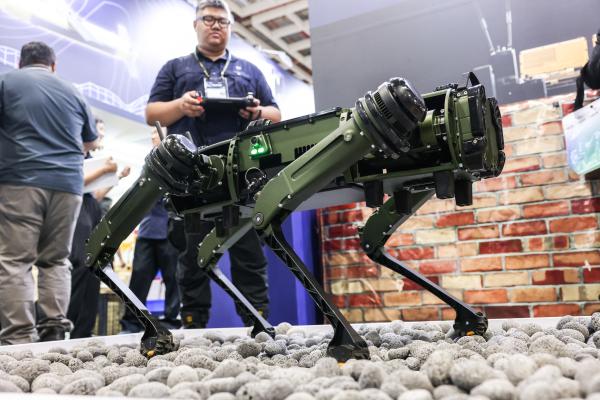
Join Hudson for a discussion with senior defense, industry, and policy leaders on how the US and Taiwan can advance collaborative models for codevelopment, coproduction, and supply chain integration.

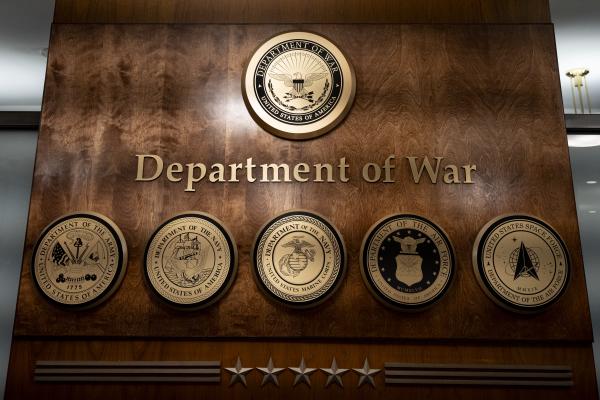
Join Senior Fellow Nadia Schadlow and an expert panel for a discussion on the DoW’s financial tools, the extent of the department’s authorities, and the role it will play in the broader American reindustrialization effort.
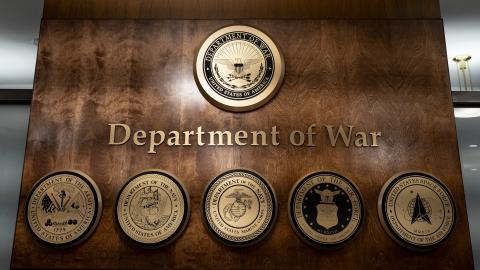

Moderated by Senior Fellow Matthew Boyse, a 35-year foreign service officer, this conversation will explore the evolving landscape of American diplomacy and development.

